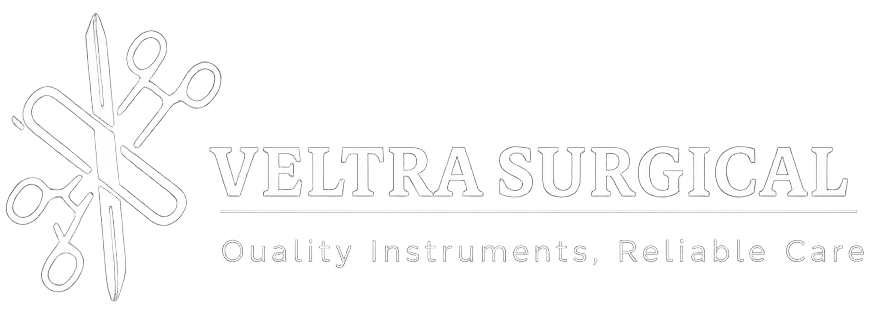Inside the World of Surgical Implants: Innovation, Market Insights, and the Future of Healing
Introduction: Redefining Healing Through Innovation
Surgical implants represent one of the most transformative achievements in modern medicine—devices designed to restore function, support biological structures, or replace damaged tissues. From orthopedic joints to cardiovascular stents and dental fixtures, implants have evolved from basic mechanical supports into sophisticated, biocompatible solutions integrated with cutting-edge materials and smart technologies.
For healthcare professionals, understanding the fundamentals, advancements, and global trends in surgical implants is crucial to ensure better patient outcomes, cost efficiency, and adoption of next-generation technologies.
1. Understanding Surgical Implants: The Foundation
A surgical implant is a medical device manufactured to replace, support, or enhance biological structures. They can be temporary (e.g., fixation plates, screws) or permanent (e.g., artificial joints, pacemakers).
Major categories include:
- Orthopedic Implants: Used in joint replacement, fracture fixation (plates, screws, rods, nails), and spinal stabilization.
- Cardiovascular Implants: Such as stents, pacemakers, and heart valves.
- Dental Implants: Titanium-based anchors that replace natural tooth roots.
- Ophthalmic Implants: Intraocular lenses used in cataract or vision-correction surgeries.
- Neurostimulators & Cochlear Implants: Devices that aid in neurological or auditory restoration.
Materials Used:
- Titanium & Alloys: High strength, corrosion resistance, and biocompatibility.
- Stainless Steel: Common in trauma fixation and orthopedic use.
- Cobalt-Chromium & Ceramics: Offer high wear resistance.
- Polymers (e.g., PEEK, PMMA): Used for flexible, lightweight applications.
- Bioabsorbable Materials: Dissolve naturally over time, eliminating the need for removal surgeries.
2. From Manual Craftsmanship to Bioengineering: Evolution of Implants
The journey of surgical implants mirrors the evolution of healthcare itself.
- 1950s–1970s: The era of metallic and mechanical designs.
- 1980s–2000s: Advancements in biomaterials and sterilization techniques improved implant longevity.
- 2000s–Present: Smart implants with nanotechnology, 3D printing, and bioactive coatings have redefined customization and patient compatibility.
Emerging technologies like additive manufacturing (3D printing) now allow patient-specific implants tailored to individual anatomy—especially in orthopedic and craniofacial surgery. Meanwhile, AI-assisted design and robotic-assisted implantation enhance surgical precision and reduce human error.
3. Global Market Overview and Growth Trends
The global surgical implants market is projected to surpass USD 150 billion by 2030, growing at a CAGR of 6–8%. The key drivers include:
- Rising prevalence of orthopedic, cardiovascular, and dental conditions.
- Aging populations and increasing surgical interventions.
- Growing demand for minimally invasive and smart implant solutions.
- Expansion of healthcare infrastructure in emerging economies.
Regional Highlights:
- North America remains the largest market due to advanced healthcare systems and R&D investments.
- Europe follows closely with strong adoption of orthopedic and cardiovascular implants.
- Asia-Pacific, particularly China, India, and Pakistan, is witnessing rapid growth due to increasing local manufacturing, affordability, and export potential.
- Sialkot, Pakistan, has emerged as a global manufacturing hub for surgical instruments and consumables—poised to expand further into implant production.
4. Industry Leaders and Market Innovators
Several global players dominate the implant landscape:
- Johnson & Johnson (DePuy Synthes) – Orthopedic and trauma implants.
- Zimmer Biomet – Joint replacements and dental solutions.
- Stryker Corporation – Advanced implantable technologies and robotic systems.
- Medtronic – Cardiovascular, neurological, and spinal implants.
- Boston Scientific – Cardiac and neurostimulation devices.
- Dentsply Sirona & Straumann – Global leaders in dental implantology.
In Asia, emerging innovators like Shaanxi Kanghui, AK Medical, and Narang Medical are capturing market share through cost-effective, high-quality production. Pakistan’s surgical ecosystem, centered in Sialkot, offers enormous potential for global OEM partnerships in implant manufacturing.
5. Technological Trends Shaping the Future
- 3D Printing & Customization: Personalized implants for orthopedic, dental, and craniofacial reconstruction.
- Bioactive & Smart Implants: Coatings that promote bone growth or resist infection.
- Nanotechnology: Improves surface biocompatibility and osseointegration.
- IoT-Enabled Implants: Real-time monitoring of performance and healing progress.
- Sustainable Manufacturing: Eco-friendly, recyclable materials and digital traceability systems.
- AI-Assisted Surgery: Integrating pre-operative imaging with implant design to enhance precision.
6. Challenges & Regulatory Landscape
Despite rapid innovation, the industry faces challenges:
- Regulatory complexity: Compliance with FDA (USA), CE (Europe), and MDR standards.
- High R&D and certification costs.
- Biocompatibility and longevity issues in new materials.
- Counterfeit and substandard products in low-regulation markets.
For emerging manufacturers, focusing on ISO 13485 certification, clinical validation, and ethical sourcing is essential for global competitiveness.
7. The Future: Integration of Biology and Technology
The next frontier in implantology lies in biointegration—creating implants that communicate with the body, adapt to tissue growth, and even self-heal.
Regenerative implants, made from stem-cell-compatible materials, and AI-integrated biosensors will transform post-surgical care from passive recovery to active monitoring.
As the world moves toward value-based healthcare, the role of implants will evolve from mere replacement devices to intelligent, data-driven companions in long-term patient wellness.
Conclusion: Empowering the Next Generation of Healthcare Professionals
Whether you are a novice healthcare worker learning about implants or a medical device leader shaping the industry’s future, understanding the synergy between science, innovation, and ethics is vital. Surgical implants are not just tools—they are bridges between biology and technology, restoring millions of lives every year.
At Veltra Surgical, we believe in advancing surgical excellence through knowledge, innovation, and collaboration—empowering healthcare professionals to make informed, confident choices in patient care.












